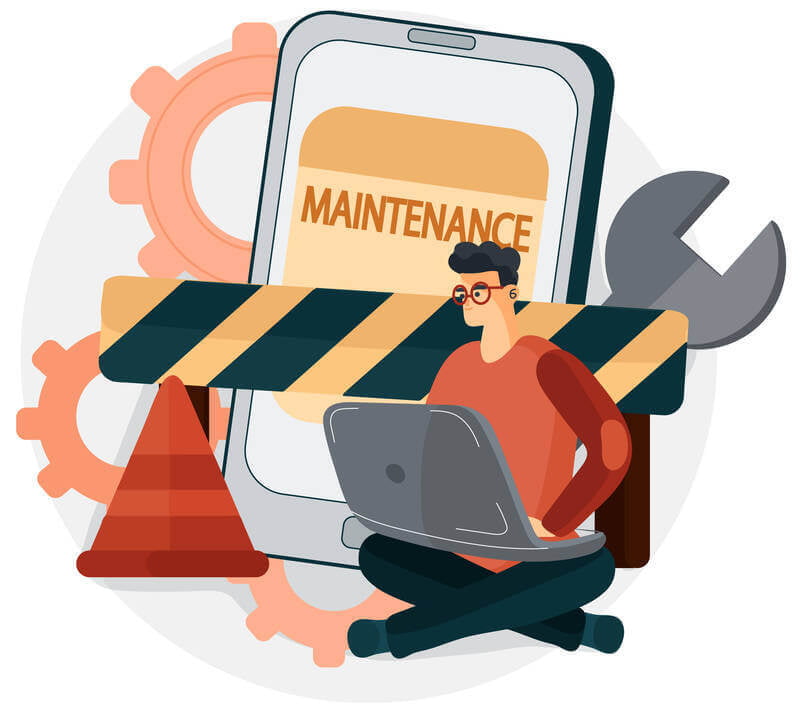
Business process improvement has become a crucial element in business operations for any type of organization and model. In fact, more and more companies are focusing on improving process efficiency in the maintenance management area. In this article, we discuss how vital maintenance management is for the successful performance of an organization.
Business Process Definition
Business Process Definition
A business process is how an organization conducts its activities to achieve objectives. It defines the way work should be done, how people should be trained or educated and managed, what specific assignments are given to whom and so much more. With regards to maintenance management, it can be said that it is also a business process that creates opportunities for improvement.
Importance of Business Process Improvement
Importance of Business Process Improvement
Businesses consider it very important to improve their services. In fact, this has been going on for a long time, as you may have noticed when purchasing a product or receiving a service. The desired result is the same: service quality improvement within the expected/promised time.
Improving business processes is based on the realization that process quality and service-oriented objectives are necessary benefits of a healthy organization. When you improve processes, you focus on innovating and implementing new technologies and functions to align the business with its primary mission. The concept of "Business Process Improvement" provides an opportunity for efficient resource optimization and identifying ways that help the business achieve its goals.

Maintenance Management
Maintenance Management
Many businesses do not realize how important it is to have a maintenance management program in place. It can help improve efficiency in an organization by enabling the organization to minimize workflow disruptions from system failure, ensuring optimal productivity through preventive maintenance.
Maintenance management (MM) is more than a set of practices that are needed to ensure the long-term success of your business. It involves monitoring the quality of your products and services, including their delivery, maintaining operational efficiency throughout every department within the organization, and keeping all other assets and essential tools in optimum running order. Properly maintained assets and resources keep your production stable and greatly minimize the chances for unplanned downtime. Lack of maintenance, updates and backup can lead to operational inefficiencies, higher costs, and reduced asset life, and ultimately, overall poor quality of your products and services.
There are numerous advantages to maintenance management. The most obvious are the huge savings on costs in labor and parts as a result of preventing unexpected downtime from costly failures. Performing corrective maintenance on your equipment, assets, and tools improves the overall efficiency in an organization’s service departments as maintenance management impacts the organization as a whole through increased service availability and productivity of every process in an organization.

Preventive Maintenance
Preventive Maintenance
Preventive maintenance planning and scheduled maintenance are two different types of maintenance processes in business, one for routine maintenance and one for scheduled maintenance.
Preventive maintenance is a proactive maintenance strategy that involves routine regular maintenance of equipment to reduce the likelihood of failures that lead to unscheduled downtime. Proactive maintenance on the other hand, is the process of scheduling maintenance as soon as minor problems are detected and allocating realistic deadlines to maintenance personnel.

Total Preventive Maintenance (TPM) is one of the most important components of the preventive maintenance process. Downtimes are reduced because the preventive maintenance process alerts maintenance personnel directly so that repairs can be planned in the event of normal failures. Preventive maintenance is performed before a failure to maximize the time the equipment is in use at the time of the scheduled maintenance activities.
Consider a preventive maintenance checklist as a starting point when you think about the necessary maintenance activities you need to keep your business running smoothly. If you are performing preventive maintenance on a device and there is a lot of unscheduled maintenance, you need to increase the frequency of scheduled maintenance and track how often you have performed preventative maintenance.
Routine Maintenance
Routine Maintenance
Routine maintenance processes in a business consist of a variety of activities that are carried out regularly, depending on the required maintenance work. It should enable the company to maximize the use of its maintenance resources. Make a list of all equipment and software that requires routine maintenance and review industry standards for repair, physical cleaning, data cleaning, and data management and ensure that there is a living document for ongoing and frequent improvements. There are two types of maintenance routines, and while corrective maintenance is reactive and happens when equipment goes wrong and needs to be repaired, routine maintenance plans and focuses on preventing future problems.
Schedule Maintenance
Schedule Maintenance
Scheduled maintenance completes the cycle when you reconcile the critical importance of the maintenance process with the availability of resources. It is responsible for determining when you will complete a schedule and who will complete the scheduled maintenance activities.
If you are new to the use of maintenance schedules, this means that you are performing your operations predominantly with reactive maintenance. There is no need to do ad hoc maintenance that could take up more time, consume more resources, and cost more than simply being more proactive.

Maintenance Processes for Your Business
Maintenance Processes for Your Business
The maintenance process should be designed to be a simple, easily executable, repeatable activity, based on a schedule of events and ideally automated as much as possible. Use preventive maintenance processes to keep the items in their best condition. If routine maintenance is not sufficient for your company, you can always use preventive maintenance measures.
Complete preventive maintenance is an approach that places responsibility for routine maintenance on the workers who operate the machines, rather than having separate maintenance personnel for each function. The employees are engaged in a wide range of activities, such as cleaning, maintenance, and repair. Each team member contributes to the maintenance of the equipment, as routine maintenance often does not require any special maintenance skills.
Maintenance Team and Tools
Maintenance Team and Tools
If you do not have a well-trained maintenance team that plans and implements preventive maintenance strategies, you can hire a professional maintenance company and an operations consulting firm and use a platform for managing routine maintenance in your company. The platform is equipped for the various operational processes related to the maintenance of equipment and other assets. This software enables certain maintenance professionals to control operation by automating tasks and scheduling of equipment maintenance, tools and software management, and repair.

Summary
Summary
In general, the assets of the company that benefits most from preventive maintenance planning are those that perform critical operational functions. Protecting your assets from breaking down is one thing, and these maintenance strategies help keep them in the best condition possible for smoother operations.. Company workers can report failures more efficiently and prevent the probability of failure from increasing with the time of use. Find more operational strategies that ensure your business is running at its optimum potential with Universal Creative Solutions today.

